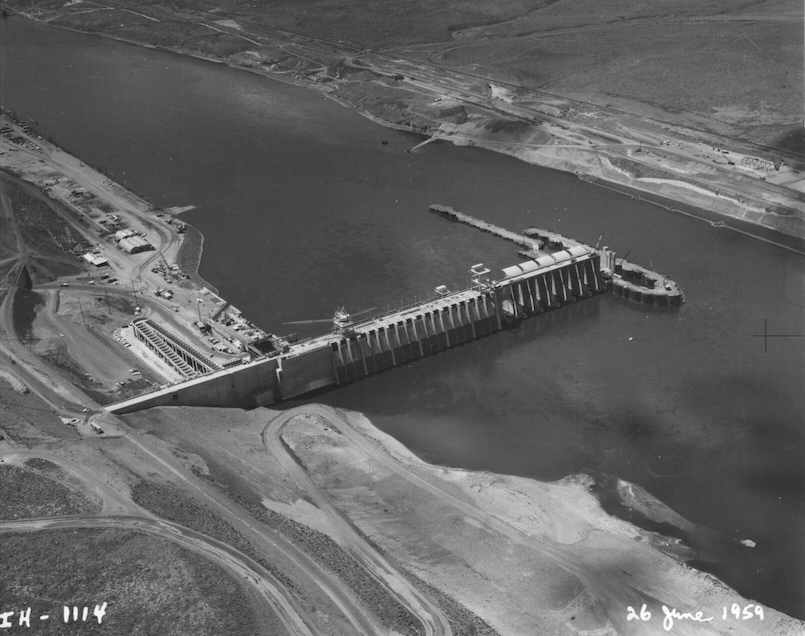forum
library
tutorial
contact

New Federal Study to Weigh
Dam Breaching Challenges
by Matthew Weaver
Capital Press, September 24, 2024
|
the film forum library tutorial contact |

|
New Federal Study to Weigh
by Matthew Weaver
|
"This is yet another step down the dangerous path towards dam breaching."
-- Jim Matheson, National Rural Electric Cooperative Association
 A new federal study called the Pacific Northwest Regional Energy Planning Project will consider ways to replace the services of the lower Snake River dams as it weighs the region's overall energy challenges.
A new federal study called the Pacific Northwest Regional Energy Planning Project will consider ways to replace the services of the lower Snake River dams as it weighs the region's overall energy challenges.
"The Northwest is facing a combination of energy system challenges, including resource adequacy, historic load growth forecasts, climate impacts to a hydropower-dominated system, natural resource and ecosystem concerns, and decarbonization," the U.S. Department of Energy stated in announcing the study. "However, most current planning for generation, transmission and distribution infrastructure takes place at the individual utility level. More granular and coordinated analysis and planning could make it easier for the many entities involved in owning, operating and investing in the regional grid to understand and address these challenges."
"The analysis and information made possible by PREPP will help individual utilities, states, Tribes, and other regional stakeholders evaluate the best combination of programmatic and investment options for meeting their operational and policy goals while understanding the impacts of choices being made by others in their region," Kristen Nawoj, with the department grid deployment office, told the Capital Press.
DOE does not have a position on removing the lower Snake River dams, Nawoj said.
The study will combine "best-in-class datasets and projections" on weather trends, extreme weather events, and new electricity demands to produce a set of future scenarios that can meet growing regional demand, provide reliable electric service, and align with regional energy policies, according to the department.
The study will provide potential infrastructure solutions to address the needs and challenges identified without prescribing any specific actions, according to the department.
"It will examine at least one scenario looking at what infrastructure and resources could be needed to replace the power and services provided by the four Lower Snake River Dams should Congress authorize removal," the department stated, citing its commitments under the memorandum of understanding signed in December between the federal government, four treaty Tribes of the lower Snake River and the states of Oregon and Washington.
"This is yet another step down the dangerous path towards dam breaching, which would jeopardize reliable electricity for millions of Americans in the Pacific Northwest," said Jim Matheson, CEO of the National Rural Electric Cooperative Association, in a press release. "Not only does this expose a severe lack of understanding about the importance of keeping the lights on, it also reveals a misplaced desire to undermine our nation's essential portfolio of carbon-free hydroelectric resources without considering the cost."
The lower Snake River Dams produce enough electricity to power 2.4 million homes, Matheson said.
Darryll Olsen, board representative for the Columbia-Snake River Irrigators Association (CSRIA), noted the study is no surprise, as it's part of the litigation settlement agreement.
"We kind of view it as somewhat innocuous activity," Olsen said.
PREPP is now under the umbrella of the Columbia River Task Force formed in June, he noted. CSRIA has suggested deep drawdowns at Lower Granite and Little Goose dams as an alternative. Leadership at the task force and the White House Council on Environmental Quality are aware of that option, Olsen said.
"I would anticipate they are going to look at something other than just four-dam breach, but we won't know until they start to move forward with their sub-groups and technical work," he said.
Related Pages:
Vilsack on Snake River Dams: Ag 'Well-Represented' in Mediation by Matthew Weaver, Capital Press, 8/1/23
learn more on topics covered in the film
see the video
read the script
learn the songs
discussion forum
